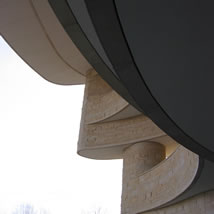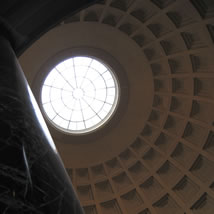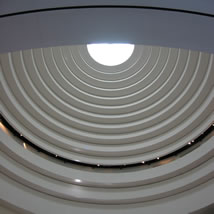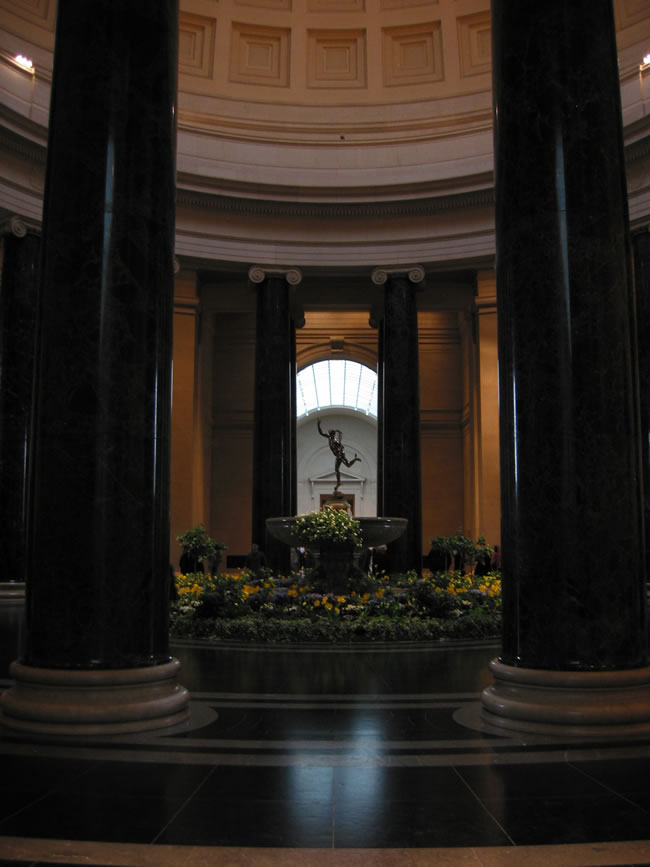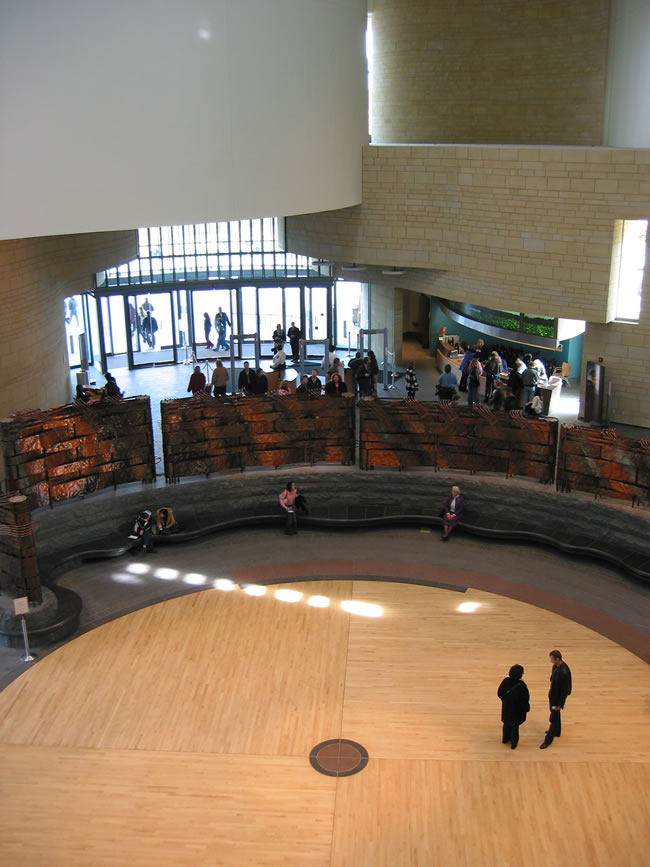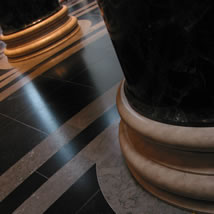The making, appropriate use of, and keeping of public buildings is an important social function. Great attention and treasure is usually spent on these endeavors and the result for each project is a statement in stone of the values of their time. Each aspect of these public buildings is the result of intense scrutiny - they are at once architecture and the creature of politics. By program and as a gesture, public buildings are usually large. This brings up the issue of human scale as they have to accommodate large numbers of people while at the same time creating place appropriate for a single individual. The two buildings profiled were built 60 years apart from one another. They reflect a USA at two different yet massive transition points. They have a great deal in common and also reflect striking differences. This paper is based on what I can see, experience and thereby infer as a user of these works. It is not the result of a great deal of research other than web references. It asks more questions than it answerers and I think some of these questions are worthy of a deeper investigation. One building is an example of “classic” architecture and was designed in the 1930s by one of the outstanding practitioners of the clasical approach, xxx xxx Pope. The second is just finished and is the only example of “organic” architecture on the Washington DC Mall - if not in all of the city. The lead designer was xxx Cardinal, a native american architect from Canada. Neither of these architects executed these buildings, one because he died. The other for reasons I do not understand. What do these two buildings teach us about the role of monumental architecture? How do they reflect their times? How does their architectural concept carry out their mission? As art, what is their THEME? Given their purpose, how well executed are they? What do they contribute to the theory of architecture? How might they be thought of a 100 years from now? What new opportunities do they point to? Both of these building are instruments of MEMORY. They, also, educate: “ to lead out.” Where do they lead us? In context of today, what message do they convey? How did they resolve the politics of their time? What is their content and how is it presented? What is their STORY? What do they say about us who built them and employ them? Neither of these building are trivial. They are, as Jaugue Barzon would say “worthy of criticism.” By the cannons of architectural theory, one is the superior work. By the standards of fidelity of execution and amenity of experience, the other is. Both were built within my lifetime. The first influenced my sense of architecture in my formative youth; the other, stands as a symbol of the paradoxes of our time in my professional maturity. I experienced both and wrote this criticism at a key transition period of my life. These facts are integral to my response - if they were not, the buildings would be poor examples of architecture and I would be insensitive to the factors that make up my social environment. I hope that they will be able to speak with as powerful a voice to future generations of architects as they have to me. | 